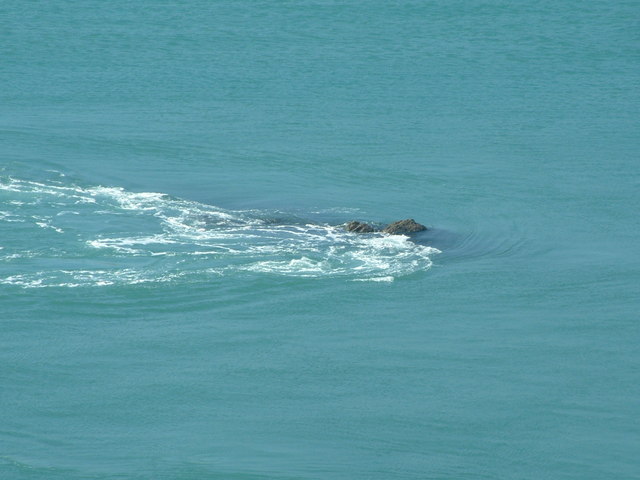|
Skomer Island
Skomer () or Skomer Island is an island off the coast of Pembrokeshire, in the community of Marloes and St Brides in west Wales. It is well known for its wildlife: around half the world's population of Manx shearwaters nest on the island, the Atlantic puffin colony is the largest in southern Britain, and the Skomer vole (a subspecies of the bank vole) is unique to the island. Skomer is a national nature reserve, a Site of Special Scientific Interest and a Special Protection Area. It is surrounded by a marine nature reserve and is managed by the Wildlife Trust of South and West Wales. Skomer is known for its archaeological interest: stone circles, standing stone and remains of prehistoric houses. Much of the island has been designated an ancient monument. Description The island has an area of . Its highest point is above sea level at Gorse Hill, while the majority of the island sits at around above sea level. Skomer is intersected by a series of slopes and ridges g ... [...More Info...] [...Related Items...] OR: [Wikipedia] [Google] [Baidu] |
Jack Sound
Jack Sound is a treacherous body of water about wide between the island of Skomer and the Pembrokeshire mainland that contains numerous reefs and a tidal race of up to 6 knots. It is used by boats to avoid a three-mile detour around the island, and has its share of sunken shipwrecks. The most popular wreck for divers is the MV ''Lucy'', which sank in good condition in February 1967 after being abandoned by its crew owing to its cargo of calcium carbide. The Netherlands-registered coaster, , was en route from Uddevalla, Sweden to Barry. The sound is part of the Skomer Marine Conservation Zone Skomer Marine Conservation Zone is an underwater marine nature reserve located off the coast of Pembrokeshire in Wales. The nature reserve completely surrounds the islands of Skomer and Middleholm, and encompasses the mainland coastline aroun .... References Tides {{Pembrokeshire-geo-stub ... [...More Info...] [...Related Items...] OR: [Wikipedia] [Google] [Baidu] |
Skomer Marine Conservation Zone
Skomer Marine Conservation Zone is an underwater marine nature reserve located off the coast of Pembrokeshire in Wales. The nature reserve completely surrounds the islands of Skomer and Middleholm, and encompasses the mainland coastline around the end of the Marloes peninsula, including the small bay of Martin's Haven. The sea bed and rocky shelves of the island are teeming with life. Common eelgrass, ''Zostera marina'', one of the very few plants that flower underwater, grows on beds of sand and gravel in sheltered waters and its long, grass-like leaves form underwater lawns that provide food and shelter for other plants and animals. Species of lobsters, crabs and other crustaceans abound, and grey seals give birth on the coast in October and November. History Although the island of Skomer had long been a protected area, the Marine Nature Reserve was not established until 1990. It was one of only three Marine Nature Reserves in United Kingdom. Since the introduction of Marine ... [...More Info...] [...Related Items...] OR: [Wikipedia] [Google] [Baidu] |
Dolerite
Diabase (), also called dolerite () or microgabbro, is a mafic, holocrystalline, subvolcanic rock equivalent to volcanic basalt or plutonic gabbro. Diabase dikes and sills are typically shallow intrusive bodies and often exhibit fine-grained to aphanitic chilled margins which may contain tachylite (dark mafic glass). ''Diabase'' is the preferred name in North America, while ''dolerite'' is the preferred name in the rest of the English-speaking world, where sometimes the name ''diabase'' refers to altered dolerites and basalts. Some geologists prefer to avoid confusion by using the name ''microgabbro''. The name ''diabase'' comes from the French ', and ultimately from the Greek - meaning "act of crossing over, transition". Petrography Diabase normally has a fine but visible texture of euhedral lath-shaped plagioclase crystals (62%) set in a finer matrix of clinopyroxene, typically augite (20–29%), with minor olivine (3% up to 12% in olivine diabase), magnetite (2%), and ... [...More Info...] [...Related Items...] OR: [Wikipedia] [Google] [Baidu] |
Trachyte
Trachyte () is an extrusive igneous rock composed mostly of alkali feldspar. It is usually light-colored and aphanitic (fine-grained), with minor amounts of mafic minerals, and is formed by the rapid cooling of lava enriched with silica and alkali metals. It is the volcanic equivalent of syenite. Trachyte is common wherever alkali magma is erupted, including in late stages of ocean island volcanismMacDonald 1983, pp. 51-52 and in continental rift valleys, above mantle plumes,Philpotts and Ague 2009, pp. 390-394 and in areas of back-arc extension. Trachyte has also been found in Gale crater on Mars. Trachyte has been used as decorative building stone and was extensively used as dimension stone in the Roman Empire and the Republic of Venice. Chemical composition Trachyte has a silica content of 60 to 65% and an alkali oxide content of over 7%. This gives it less SiO2 than rhyolite and more (Na2O plus K2O) than dacite. These chemical differences are consistent with the positio ... [...More Info...] [...Related Items...] OR: [Wikipedia] [Google] [Baidu] |




